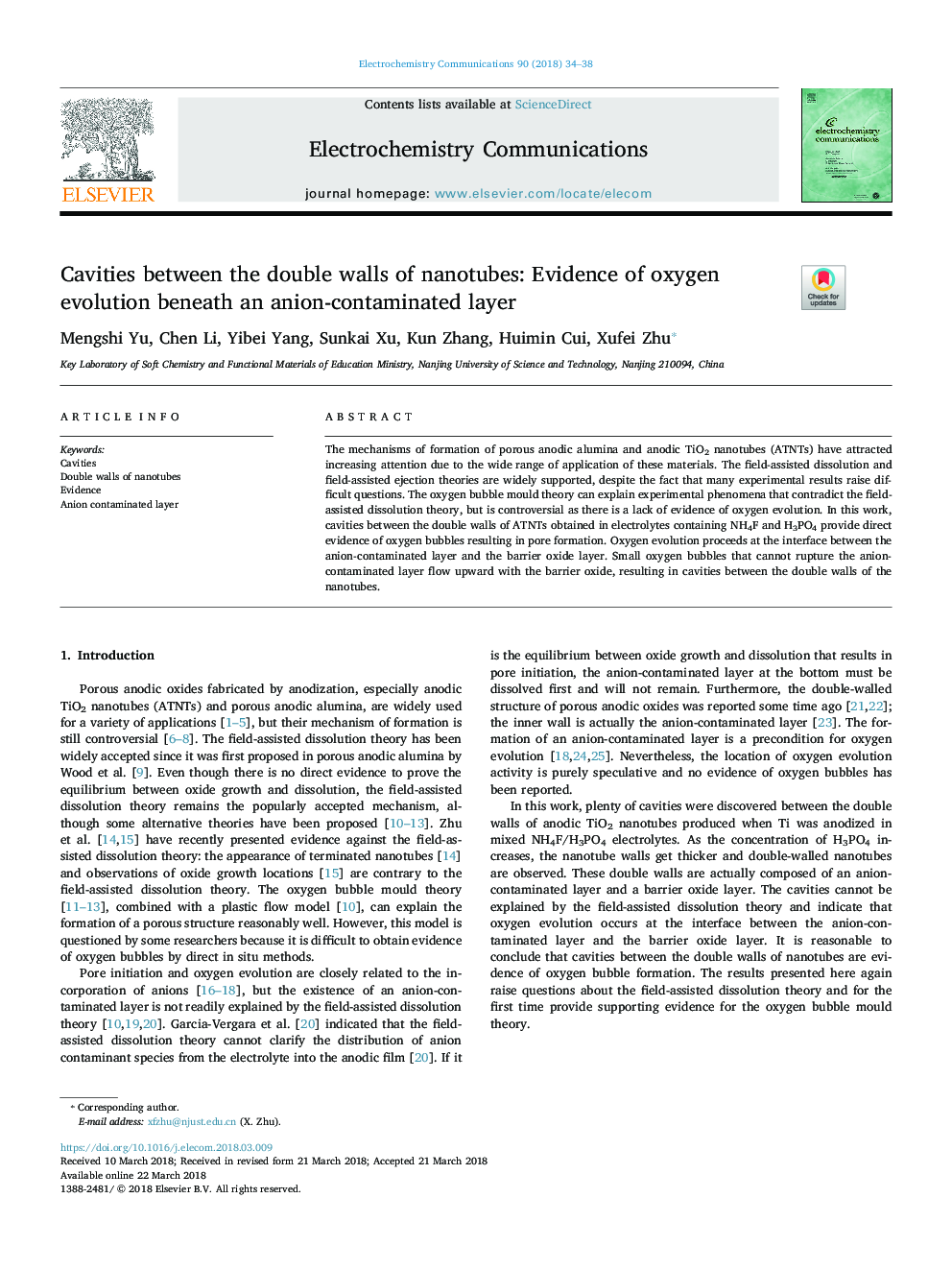| Article ID | Journal | Published Year | Pages | File Type |
|---|---|---|---|---|
| 6600805 | Electrochemistry Communications | 2018 | 5 Pages |
Abstract
The mechanisms of formation of porous anodic alumina and anodic TiO2 nanotubes (ATNTs) have attracted increasing attention due to the wide range of application of these materials. The field-assisted dissolution and field-assisted ejection theories are widely supported, despite the fact that many experimental results raise difficult questions. The oxygen bubble mould theory can explain experimental phenomena that contradict the field-assisted dissolution theory, but is controversial as there is a lack of evidence of oxygen evolution. In this work, cavities between the double walls of ATNTs obtained in electrolytes containing NH4F and H3PO4 provide direct evidence of oxygen bubbles resulting in pore formation. Oxygen evolution proceeds at the interface between the anion-contaminated layer and the barrier oxide layer. Small oxygen bubbles that cannot rupture the anion-contaminated layer flow upward with the barrier oxide, resulting in cavities between the double walls of the nanotubes.
Related Topics
Physical Sciences and Engineering
Chemical Engineering
Chemical Engineering (General)
Authors
Mengshi Yu, Chen Li, Yibei Yang, Sunkai Xu, Kun Zhang, Huimin Cui, Xufei Zhu,
